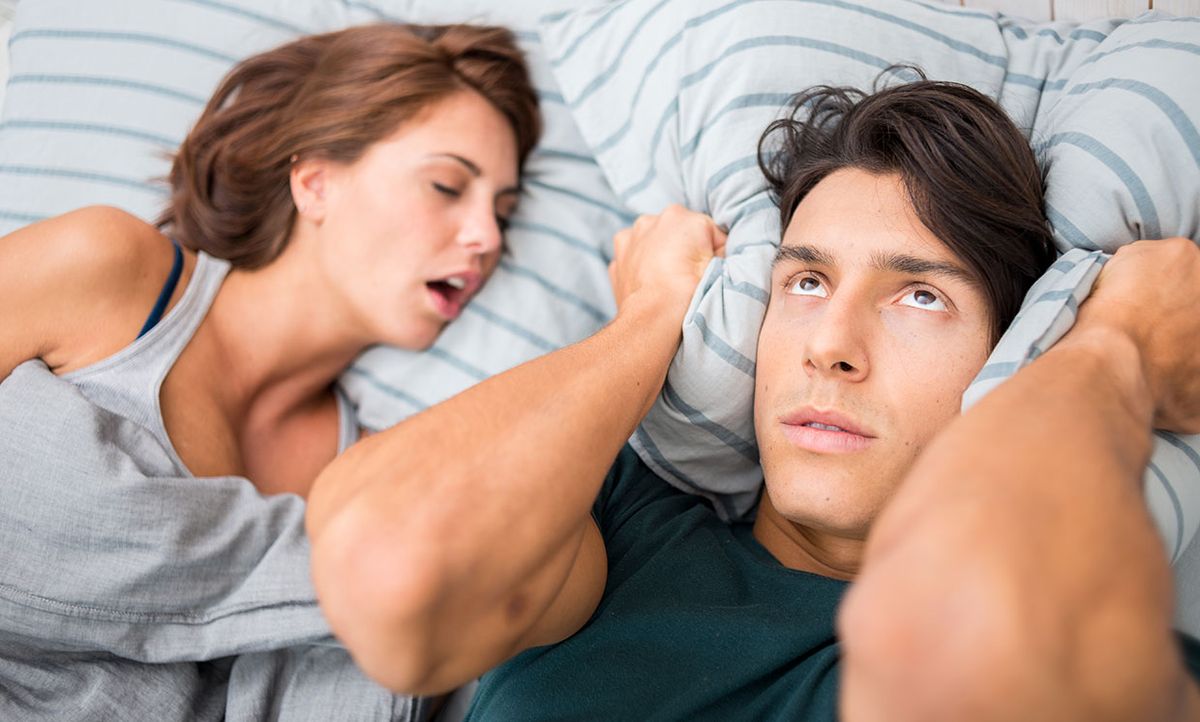No matter how much you love your partner, you may like them a little less if they snore loudly. That’s understandable. Noise levels around 35 decibels (dBs) are sufficient to disrupt a person’s quality of sleep—a level easily exceeded by moderate snoring that occurs in the 50-to-60-dB range (the record is a grandmother in the United Kingdom, who hit bellowing baritones of 116 dBs). Impaired quality and quantity of sleep can result in more than just crankiness; it can directly affect the energy, concentration, and alertness of the snorer’s partner.
But there is some good news for sleep-deprived lovers. A new noise-canceling system, embedded within the nonsnoring partner’s pillow, relies on an adaptive algorithm that adjusts to each snorer’s unique, wheezy breathing patterns. A study describing the design was published on 3 January in IEEE/CAA Journal of Automatica Sinica.
To cancel out a sound wave, a second sound wave of equal amplitude but opposite phase must be interposed with it. Therefore noise-canceling systems must detect the initial sound, account for residual noise (errors), and then produce sound waves that cancel out the original ones. While such systems do exist for snoring, most were designed to mount on the headboard of beds.

Lichuan Liu of Northern Illinois University says there is a major pitfall with the headboard approach. “The quiet zone is centered…away from the ears of the snorer’s bed partner, resulting in less noise reduction around the ears of the snorer’s bed partner,” she says. “Moreover, a headboard is heavy, bulky, and not portable.”
Instead, her team designed a system that’s embedded in the partner’s pillow. It involves an adaptive filter that receives two input signals—snoring signals, which are detected by a reference microphone, and residual noise (errors), which are detected by two error microphones. Based on these inputs, the adaptive filter then generates the appropriate antinoise signal, which is emitted by two speakers within the partner’s pillow.
What’s more, conventional noise-canceling systems for snoring have relied on least mean square (LMS) algorithms to generate antinoise. Here, Liu and her colleagues used an adaptive LMS algorithm.
“Since each snorer’s snore signals have their unique time-frequency characteristics, it is essential to design an adaptive LMS algorithm for the best cancellation performance for different snore signals,” says Liu. Thanks to the adaptive LMS, the filter in this system can adjust to the length of an individual’s unique snore, and respond to subtle changes in its acoustic characteristics.

In experiments, when a noise-sensing dummy was placed in a bed and exposed to recorded snoring, the system designed by Liu and her colleagues achieved noise reductions of 31 dB and 30 dB, in the dummy’s right and left ear respectively; in contrast, placement of the system on the headboard only achieved noise reductions of 22 dB and 21 dB. This translates to nearly a two-fold reduction in perceived snoring by the dummy, simply by placing the system within the pillow, rather than the headboard.
“We can also tell from simulation that the adaptive LMS has much better performance than the traditional LMS,” says Liu. Their simulation data suggest that the adaptive LMS can achieve reductions of 19 dB and 20 dB on the left and right side of a sleeper, while the traditional LMS algorithm only yielded reductions of 16 dB and 12 dB.
Moving forward, Liu and her colleagues plan to use machine learning techniques to recognize the snore signals that are indicative of sleep disorders, for better screening and monitoring purposes.
Frustrated with your sleep problems? Sleep easy—new solutions are coming down the pipeline.
Michelle Hampson is a freelance writer based in Halifax. She frequently contributes to Spectrum's Journal Watch coverage, which highlights newsworthy studies published in IEEE journals.



